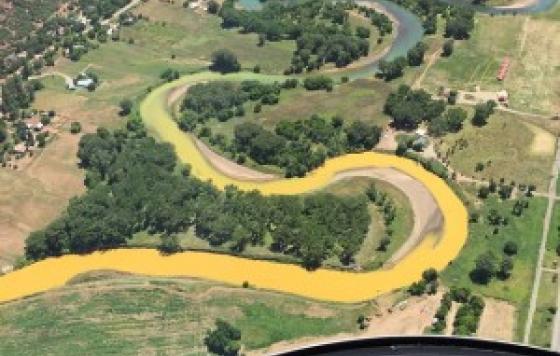
By Jennifer Peters, National Water Campaigns Coordinator - Follow Jennifer on Twitter (@EarthAvenger)
The referenced media source is missing and needs to be re-embedded.
After years of delay, EPA will finalize its coal ash rule on December 19th. Will it be strong enough to protect the hundreds of communities impacted by this toxic waste?
Six years after our nation’s largest industrial waste spill – the 2008 Kingston Fossil Plant disaster that dumped over a billion gallons of toxic slurry into two Tennessee rivers and buried several homes – the Environmental Protection Agency (EPA) will finally issue the first-ever federal coal ash regulation. The Agency is under a court-ordered deadline to publish its final rule by Friday, December 19th.
Those of us who have been working on this issue for years are anxiously waiting to see if EPA’s new rule will be strong enough to prevent future disasters like Kingston or a spill like the one that happened at Duke Energy’s retired Dan River plant this past February. Coal ash, the toxic remains of burning coal, is one of the largest industrial waste streams in the country. It contains a witches’ brew of nasty chemicals – arsenic, mercury, lead, selenium, hexavalent chromium – just to list a few. Every year, power plants produce a staggering 140 million tons of coal ash – that’s enough toxic waste to fill train cars stretching from the North to the South Pole.
Absent federal regulations, lax state regulations have resulted in coal ash contaminating more than 200 rivers, lakes, streams and groundwater sources in 37 states. Coal ash is typically disposed of in large, unlined, unstable and unmonitored pits near water sources – it doesn’t take a rocket scientist to understand how this reckless practice could lead to water contamination.
When EPA publishes its long overdue rule on Friday, some of the questions I will be looking to answer include:
- Does the rule ban the use of coal ash ponds? Storing coal ash in wet impoundments like the pond that failed at the Kingston plant is the absolute worst way to store this toxic waste. Instead, coal ash should be disposed of in dry landfills.
- What protective standards does the rule require? Not only should coal ash be stored in dry landfills, these disposal sites need to be properly lined and sited far away from water resources. Disposal sites should be monitored carefully to ensure contaminants don’t leach into surface or groundwater. Landfills also need to be covered to prevent the blowing of toxic dust, which can be very harmful when inhaled.
- Does the rule require the cleanup of inactive sites? Duke Energy‘s coal ash pond that failed on February 2nd and spewed 39,000 tons of toxic waste along 70 miles of the Dan River, was a closed plant. As more power plants retire or convert to different fuel sources, there will be more inactive sites (also known as legacy sites) popping up around the country. These sites need to be cleaned up and monitored to ensure they don’t continue to leak poisons into our water resources long after they stop accepting waste.
- Does the rule restrict the use of toxic ash in structural fill? Allowing the use of coal ash as fill for roads, golf courses, or other construction projects is a hazardous practice. Several communities around the country can no longer drink their water because it has been contaminated with ash that was used as fill in construction projects.
Related Posts
Stay Informed
Get the latest updates and actions:
Thanks for signing up!
There was a problem processing your signup. Please try again.


